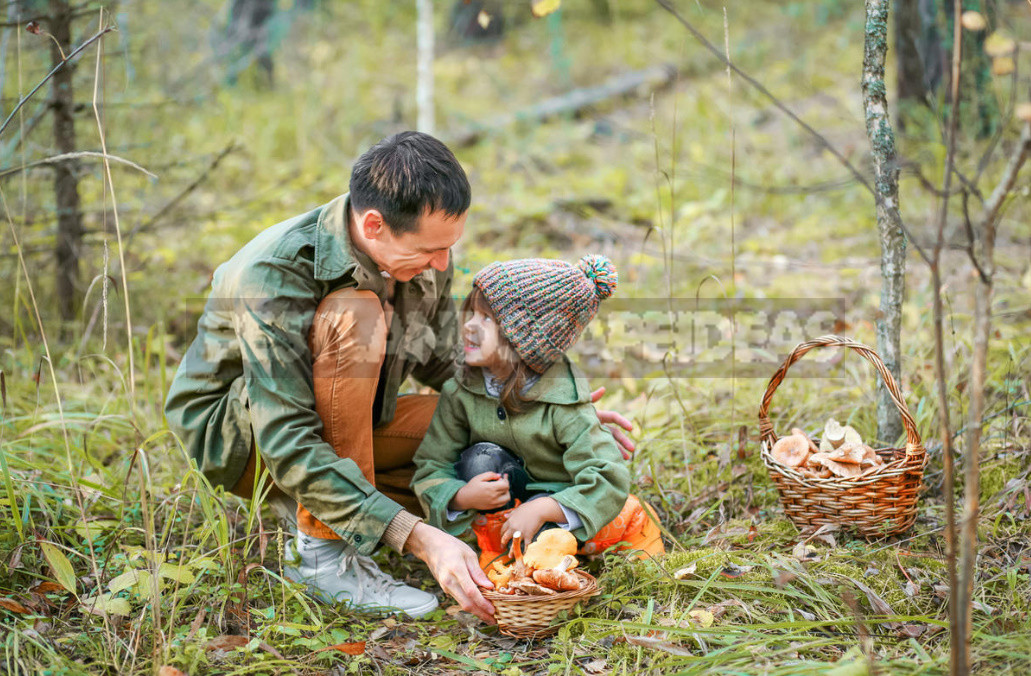
September is surprisingly rich in mushrooms. Experienced Housewives know that not all are suitable for salting.
Hiking in the fabulous autumn forest warm the soul and create a great mood, which remains long after the walk, so many go to mushrooms with their families. So what to send to the basket in the first place, how to recognize the Royal mushrooms for salting among many others?
Gomphidius
One of the first autumn grow Gomphidius. They may appear earlier, but in September there is a peak of their growth. For collection will need individual basket or same will have to separate them part of a common your basket, otherwise they’ll get all the rest mushrooms. Interestingly, Gomphidius grow in almost the same places as Boletus edulis, but later for half a month, a month.
Gomphidius glutinosus
Season: June-October.

Habitat: on soil and forest litter in coniferous (especially spruce) forests, grow in groups or singly.
Species description:
- hat diameter 4-10 cm (sometimes up to 14 cm), fleshy, first convex-conical, with bent edges, later – prostrate. Distinctive properties of the species: gray-purple or gray-brown hat, covered with a mucous membrane of thin filamentous fibers, as well as conical plates connecting the hat with the leg, and the presence of yellow spots at the base of the leg. The skin is easily removed completely;
- leg height 4-10 cm, thickness 8 to 20 mm, sticky, whitish, with characteristic yellowish spots, especially pronounced near the base. In young fungi, the cap is connected to the stem by a thin colorless film, which, as the fungus grows, breaks and forms a brownish mucous ring on the stem;
- the flesh is whitish, soft and fragile, odorless, slightly sour taste;
- the plates are attached, rare, highly branched, go down the leg cone-shaped. Color plates in young mushrooms whitish, later-gray, then-blackish.
Variability: the color of the cap can vary from gray-purple, brown-purple to brownish. The Mature mushrooms on the cap appear black spots.
Similar species: Gomphidius glutinosus in appearance similar to Gomphidius roseus, which is characterized by a coral-reddish color of the cap.
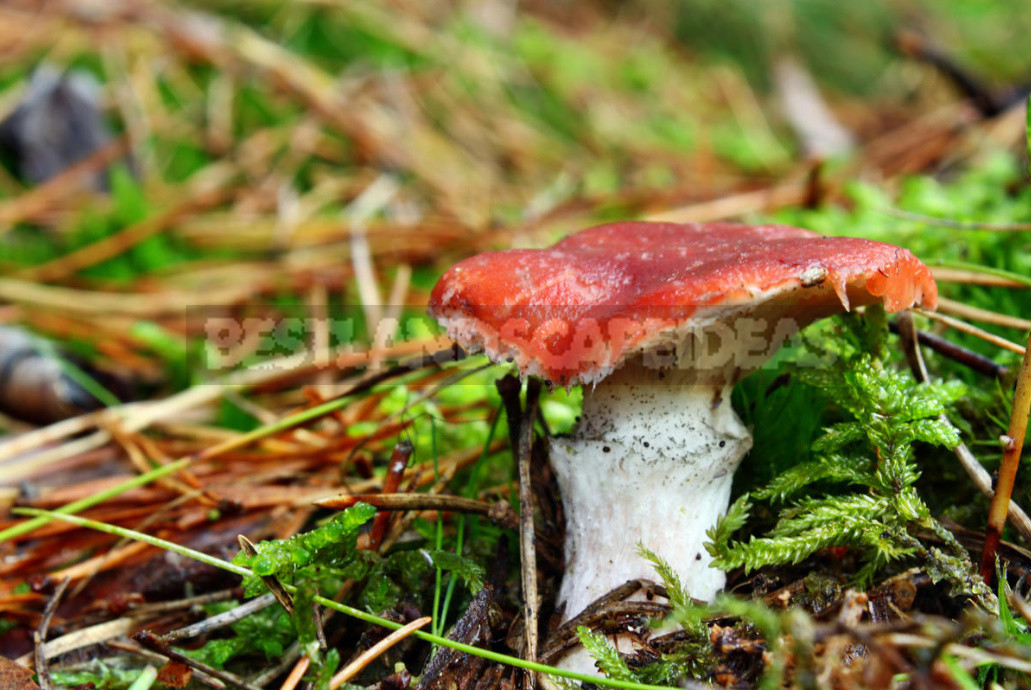
Edibility: good edible mushrooms of the 3rd category, but they must be removed from the adhesive skin.
Methods of cooking: they can be boiled, fried, canned.
Armillaria mellea
If August is the peak of the collection of tubular mushrooms, in September only have time to send in baskets and baskets lamellar and above all — autumn Armillaria mellea. A whole army of mushroom pickers are looking forward to the season of their collection, because it is known that these mushrooms give the maximum weight of the crop. Autumn Armillaria mellea can first appear in some places – on stumps and fallen trees, and can grow immediately in the vast forest areas. In the first two or three days they are tiny, the size of a match and a pinhead. On the fourth day can become the size of a coin, and a week (depending on subspecies) diameter of cap is from 2.5 to 7 cm.
Autumn Armillaria mellea surprisingly tasty in any form: in soup, fried with onions and potatoes, pickled, salted, canned in tomato sauce. As soon as the peak of their growth wanes on trees and stumps, there is a second wave of autumn Armillaria mellea – on the roots of trees. From the outside it may seem that they grow on the ground, but in fact – necessarily on the roots or forest floor.
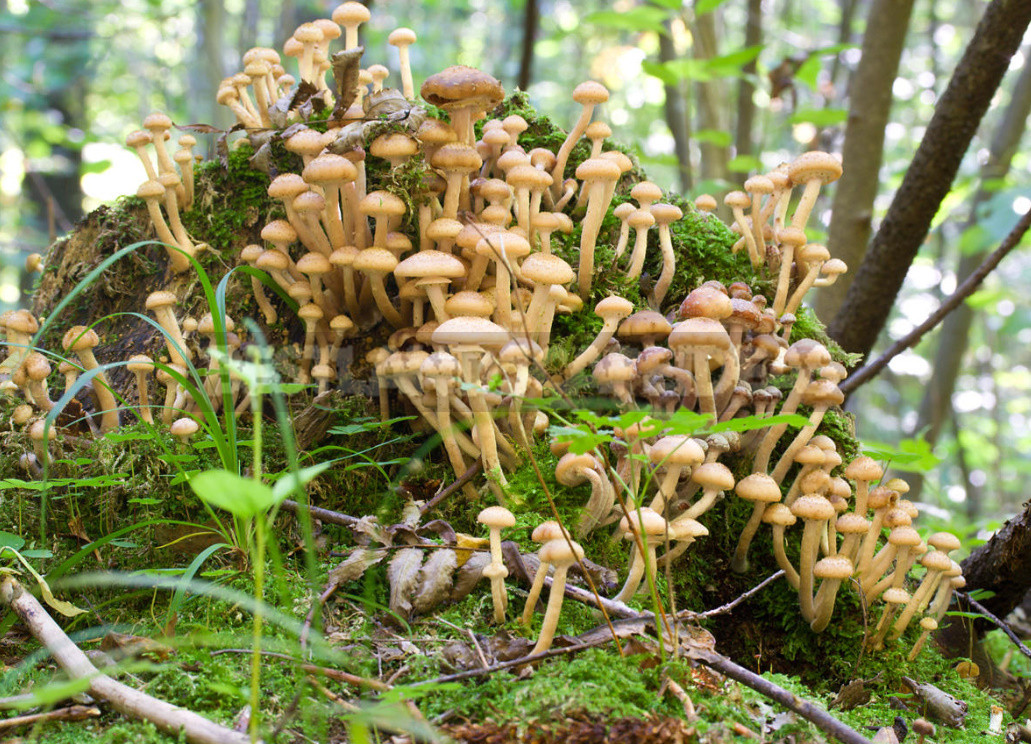
It should be noted that Armillaria mellea have extremely useful and even therapeutic (especially against cancer) properties. It should be borne in mind that the healing properties of mushrooms are preserved during salting, freezing or drying, and during heat treatment disappear.
If Boletus edulis is considered the most delicious and fragrant, then Armillaria mellea is an ideal option for mass preparations. Just imagine: the harvest from one place can be from 0.5 to 10 kg! At the same time mushrooms are so beautiful, clean, strong, that it is a pleasure to look! And if you add to the appetizing appearance of a soft mushroom smell and great taste, it becomes clear why in late August and autumn, huge armies of mushroom pickers go into the woods for Armillaria mellea. But how without a fly in the ointment to our barrel of honey? Just cut fungus after fungus, being delighted with the found wealth, it is impossible! In any state, remember about the poisonous twins, all the time striving to leak into your basket.
Safety precautions when collecting Armillaria mellea
It’s important! When collecting a large number of mushrooms need to double the attention and caution, as one stump next to good species can grow inedible:
- Mycena;
- Hypholoma fasciculare;
- Hypholoma sublateritium.
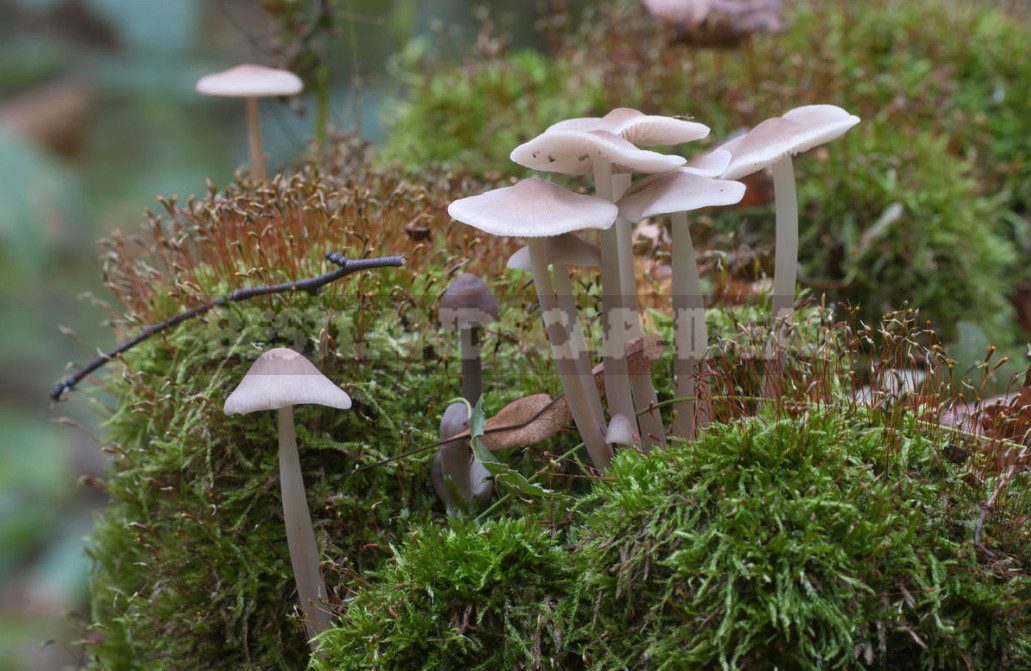
Armillaria mellea
Season: August-November.

Habitats: coniferous and mixed woods, on wood of coniferous breeds, stumps, the fallen trees. They grow in huge groups. Some of the most favorite mushrooms.
Species description:
- hat 3-10 cm in diameter, first round-convex, later-prostrate, sometimes with a tubercle in the middle. The distinctive property of the species is considered to be yellow-brown or brown-reddish hat with numerous small brown scales. The edges of the hat are striped, first wrapped inside, later straightened. In young specimens, the cap is connected to the leg by a white film, which later remains in the form of a ring at the top of the leg;
- leg 4-12 cm tall and 6-15 mm thick, dense, cylindrical, first flake-scaly, later almost naked, slightly expanded near the base. At the top of the leg is a well-defined ring with a fringed edge. The leg is usually exactly the same color as the hat;
- the flesh is dense, white, does not change color at the break, with a pleasant smell and taste;
- the plates are rare, attached, slightly descending along the leg, thin, frequent, whitish-yellowish in young specimens, brownish in maturity, often covered with rusty spots.
Variability: the hat can be light (yellow-brown) in dry weather, and in wet and cold its color darkens (to dark brown).
Similarity to other species: Armillaria mellea is similar to the inedible Hypholoma capnoides, which is distinguished by very frequent plates of grayish or gray-brown color.
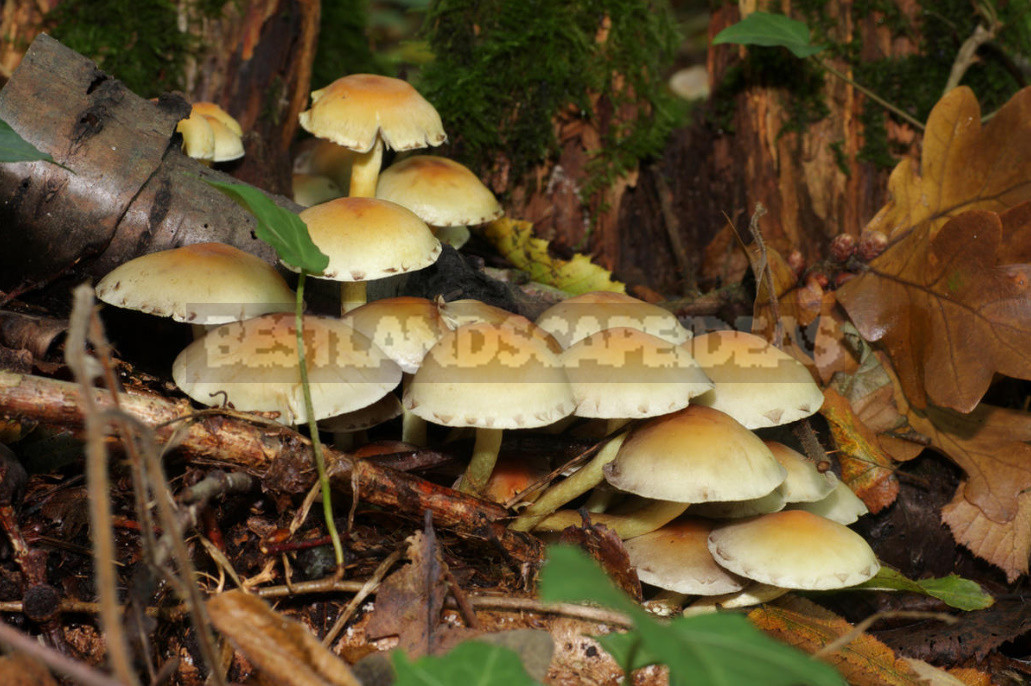
And also similar to Hypholoma sublateritium with frequent plates of olive-brown color with a purple tinge.

Edibility: edible, assigned to the 3rd category.
Methods of preparation: frying, marinating, cooking.


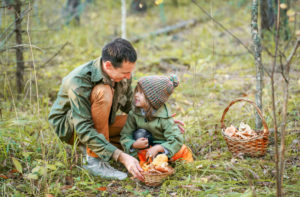
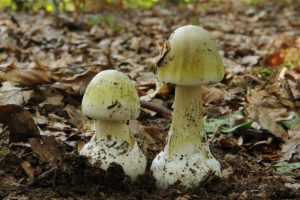
Leave a Reply